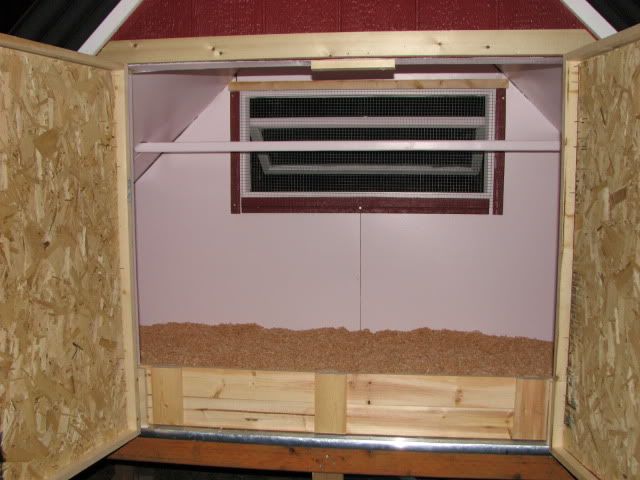Housing
Chicken housing is really quite important and it should be the first thing done before bringing home your feathery friends.Coop
The coop is where the chickens sleep at night and may or may not be integrated into the chicken run. It is important that the coop is secured from predators and is weather proof. They need good ventilation, somewhere too roost and somewhere to lay eggs. Water and food access in the coop isn't necessary [unless they will be locked in the coop section for long periods of time during the day] but an option if it suits.
What the coop actually is, is really dependant on your space and how many chickens you have.
It can be as small as a chicken tractor that holds a couple of hens. A chicken tractor is a portable coop and run that can be moved around on the grass.
 |
| Chicken Tractor source |
Sheds or aviaries can be converted easily into secure housing and some are actually designed and sold specifically to keep poultry in.
 |
| Poultry shed source |
Or if you really wanted something unique, what about a gypsy caravan?
 |
| source |
The number one thing to remember is to make sure it is completely secure from predators. Foxes, cats and dogs are the most likely suspects to try to make a meal of your chickens. Floors need to be solid [concrete, wood...] or if that isn't an option have mesh laid down to stop predators digging under and in. Doors need to be able to be latched securely
Roosts
Chickens love to roost high, as high as they can get in most cases. It's a natural instinct for them to keep out the way of predators. The simplest of designs is two or three horizontal poles attached to two or three vertical posts [depending on the size needed] which is then leaned against the wall of the coop at an approximate 45 degree angle.
 |
| 45 degree roosting rack source |
 |
| Horizontal roost source |
Nesting boxes
Nesting boxes can really be made from anything, as long as the chicken's can fit in them. Old clean paint tins, hollowed computer monitors, wooden boxes or plastic drums.
I personally use cleaned out old 20L liquid chlorine drums I get from a local salvage yard for $2. I cut 2/3 of the bottom of the drum off with a angle grinder and voila, instant nesting box! They're easy to clean, don't break very easily and are perfect size for my chickens [or two!].
It's a good idea to give the chickens a choice of a few nesting boxes. Chickens will often end up with a favourite nesting box, and almost guaranteed it will be the favourite of ALL the chickens! Mine all like to lay in the black drum nesting box.
Run
Normally a run would be attached to a coop, but in some cases the coop may be a separate structure inside the actual run.
Runs need to also be secure from predators, whether or not the chickens have access to the run all the time. Smaller runs attached directly to the coop should either have a large mesh floor especially movable coop/run combinations like chicken tractors or have predator proof fences.
Predator proof fences can either be done by digging a trench about 30-50cm down and laying in heavy duty mesh wire or laying at least 1/2 a metre of mesh along the ground out from the bottom of the fence and securing it down. This is to deter foxes, cats and dogs from digging under it.
Smaller runs should also have a roof to stop foxes and cats scaling the fence and to also stop predatory birds from taking or harassing the chickens. It also will stop other wild birds consuming the chicken feed. Larger runs that cannot be roofed should have a coop that can be secured at night.
Free ranging
All chickens love the chance to free range in the yard, finding grubs and bugs and eating weeds [and precious plants if you aren't careful]. Even if they can only be let out for a couple of hours before dusk it will benefit them-they love to explore.
Just be aware that predators can still strike during the day-even foxes, so it isn't really advisable to let the free range if no one is home.



No comments:
Post a Comment